Marijuana Legalization Talking Points
HOW TO ANSWER QUESTIONS ABOUT MARIJUANA LEGALIZATION
Following are suggested responses to questions you may receive from students, parents, and community leaders. The content presented is not to be incorporated into classroom lessons.
- What is D.A.R.E.’s position regarding the legalization of marijuana?
D.A.R.E. America is a non-profit organization dedicated to our mission of “Teaching students good decision-making skills to help them lead safe and healthy lives.” We believe it is neither safe nor healthy for students and all children under the age of 18 to use marijuana. The science on this subject is clear…the use of marijuana by youth has dangerous and unhealthy consequences on many levels.
Additionally, several studies have documented the significant negative consequences of legalization including:
- Increased illegal use of marijuana by minors;
- Increased traffic accidents and traffic deaths as a result of driving under the influence of marijuana;
- Increased emergency room visits with marijuana related overdoses;
- Increased number of hospitalizations from the use of marijuana;
- Increased risk of addiction and use of other more lethal drugs. The National Institutes of Health reports that 1 out of every 6 adolescents who try the drug will develop an addiction.
Further, while the use of marijuana may be legal in a few states, it is still not legal anywhere in the United States under Federal law. For these reasons and others, we are opposed to the legalization of marijuana.
- What does a D.A.R.E. officer tell his/her students when asked about legalization of marijuana?
Each and every day, today’s students are bombarded with messages requiring them to make decisions related to the use of drugs and alcohol, bullying and cyber bullying, tobacco, and internet safety just to name a few of the high risk behaviors they see on their smartphones. D.A.R.E. officers present an evidence-based curricula, keepin’ it REAL, developed by Penn State University that is based upon Socio-Emotional Learning Theory. The keepin’ it REAL elementary and middle school curricula provide students with the knowledge, skills, and tools to make decisions for safe and healthy living related to these potentially high risk behaviors and circumstances. When asked about the legalization of marijuana, the D.A.R.E. officer’s first response is…under no circumstance, is it legal for anyone under the age of 18 to use marijuana.
- What does a D.A.R.E. officer say when asked, “If marijuana is legal in my state, then why is it bad for me?”
Just because something is legal doesn’t mean it’s good for you. Cigarettes are legal and science clearly shows that it is unhealthy and leads to heart disease and cancer. Prescription drugs are legal when prescribed by a physician and used only as prescribed. No one else, however, should ever use prescription drugs that were prescribed for another individual. Most importantly, though, many scientific studies have shown that marijuana use by underage youth has many negative consequences including impaired brain development and other detrimental health effects.
- What is D.A.R.E.’s position on marijuana as a gateway drug?
After decades of studies, the research is still inconclusive regarding whether or not marijuana is a gateway drug and, if so, what other variables may contribute to an individual who has repeatedly used marijuana being drawn to experiment or use other types of illicit drugs. D.A.R.E.’s curricula focus on providing students with the knowledge, skills, and tools to make decisions for safe and healthy living and the avoidance of high risk behaviors. Without question, a student’s use of marijuana is a high risk behavior with unhealthy consequences.
- What is the relationship between marijuana legalization and the current opioid epidemic?
The legalization of marijuana increases availability of the drug, diminishes the perception of harm related to its use, and increases acceptability of its use. Research has evidenced marijuana use is positively correlated with alcohol use and cigarette use, as well as illegal drugs like cocaine and methamphetamine.
Certainly not everyone who uses marijuana will transition to using heroin or other drugs, but it does mean that people who use marijuana also consume more, not less, legal and illegal drugs than do people who do not use marijuana. It has been reported people who are addicted to marijuana are three times more likely to be addicted to heroin.
- What is our view regarding DOJ’s announcement about enforcing Federal laws relating to the sale of marijuana and likely increased enforcement?
While D.A.R.E. curricula for elementary, middle, and high school students are delivered by highly trained law enforcement officers, D.A.R.E.’s mission is solely and exclusively prevention education. Each D.A.R.E. officer is a local law enforcement officer committed to upholding the laws of their respective communities. The enforcement of Federal law related to marijuana falls under the jurisdiction of Federal authorities.
Copyright © 2022 D.A.R.E. America. All Rights Reserved.
Copyright © 2022 D.A.R.E. America.
All Rights Reserved.



